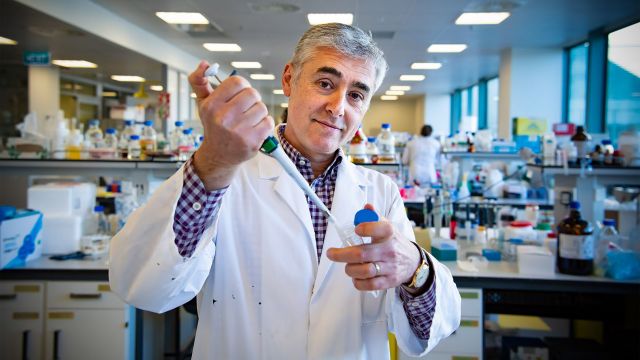
A spike in vaccine development
Te Herenga Waka—Victoria University of Wellington’s Dr Davide Comoletti is playing a pivotal role in New Zealand’s drive to develop a COVID-19 vaccine.

Te Herenga Waka—Victoria University of Wellington’s Dr Davide Comoletti is playing a pivotal role in New Zealand’s drive to develop a COVID-19 vaccine.

A surprise finding in the microscopic “assembly line” which constructs some types of anti-cancer and antibiotic molecules could have major benefits for our health.

Two Te Herenga Waka—Victoria University of Wellington PhD students, along with their supervisor Dr Andrew Munkacsi and fellow academics from Columbia University in New York City and Tottori University in Japan, have collaborated to identify which currently available drugs could be repurposed to help treat COVID-19.

Ten years ago a magnitude 7.1 earthquake ripped a 30-kilometre gash across the Canterbury Plains, revealing previously hidden faults and changing our understanding of earthquake science.

Te Herenga Waka—Victoria University of Wellington researchers will play a key role in a new alliance that brings together several organisations in the search for a COVID-19 vaccine for New Zealand.

Alumna and senior lecturer in Immunology Dr Lisa Connor is using her vaccine expertise to help in the quest for a New Zealand made COVID-19 vaccine.

With the price of helium skyrocketing in recent years, Te Herenga Waka—Victoria University of Wellington’s School of Chemical and Physical Sciences has taken an innovative approach to its nuclear magnetic resonance (NMR) laboratory’s liquid helium needs.

Kevin Burns examines the concept of 'island syndrome' in plants and animals as he attempts to solve some of the riddles of island evolution.

With the support of a Fulbright-EQC Scholarship, PhD student Jesse Kearse from Te Herenga Waka—Victoria University of Wellington’s School of Geography, Environment, and Earth Sciences plans to head to the United States to study satellite data with world-leading experts at the NASA Jet Propulsion Laboratory in California.

Individuals living in colonies, working together through the division of labour and cooperating to care for young is nothing new in the animal kingdom, but the discovery of this behaviour in a plant offers a major breakthrough in our understanding of how life has evolved on Earth.